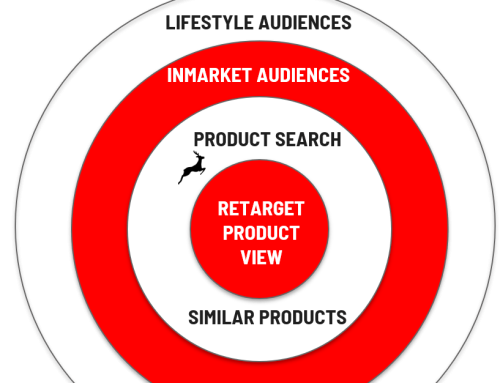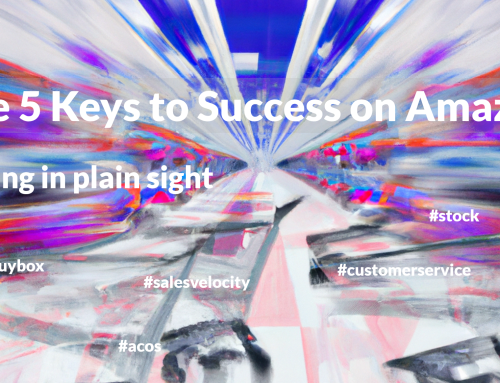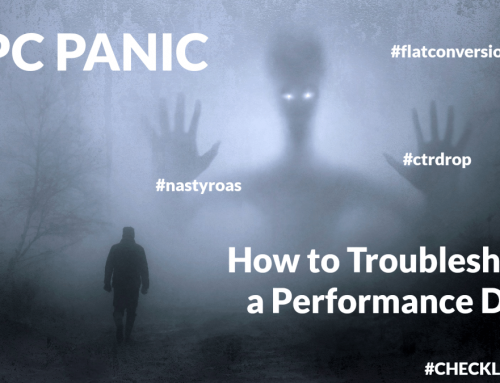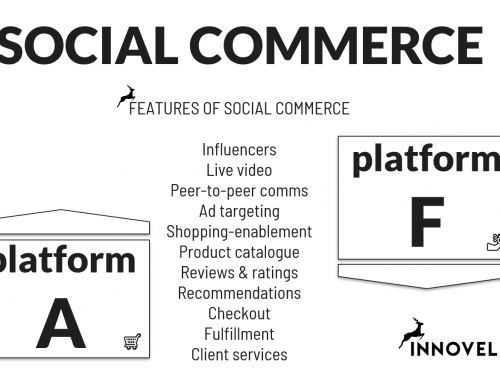Paid Search Strategy
“No, a bid strategy is not a paid search strategy.” Setting bids for paid search is simply optimization. There are so many instances we should be calling tactics or tools, but they are named “strategy”. Maybe to make them seem more important than they are.
On the flip side paid search strategy is often a neglected topic. Sometimes in business and oftentimes on conferences, blogs and in industry publications. Let’s start making up for it below.
In the 2020ies, search engines are boosting their advertising engines with artificial intelligence (AI). We found an increase from 44% to 76% in the adoption of AI-driven “smart bidding” between 2018 and 2020 among leading paid search agencies. This shift to AI is happening across the entire digital advertising space and is making marketers wonder if they will be obsolete in the future. They will not. But their role will continue to change toward less execution and more strategic decision-making and planning.
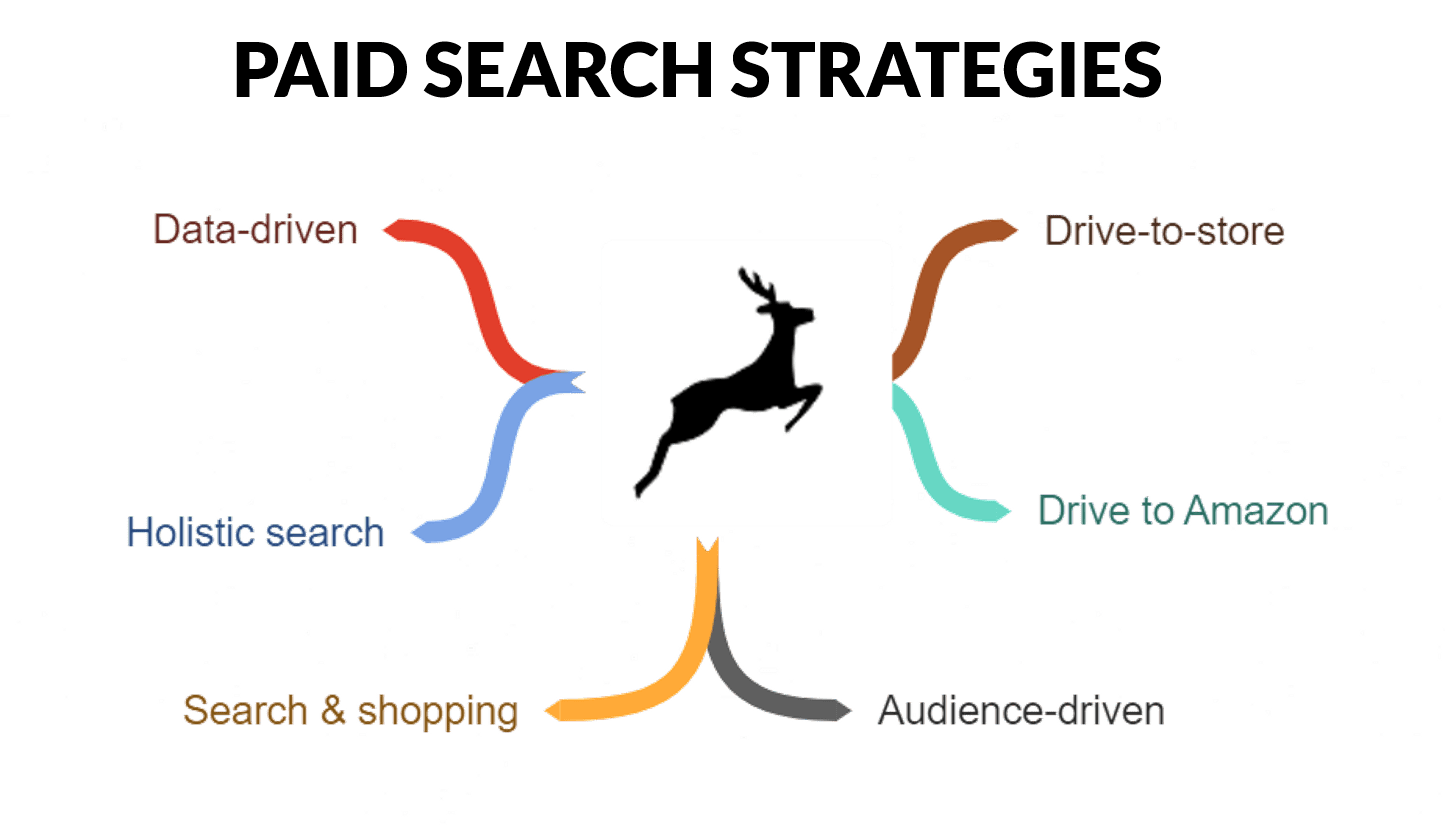
The 6 main paid search strategies in 2021
What is a paid search strategy and why is it important?
With AI and automation speeding up the engines, it becomes more dangerous to manouver your search campaign. Taking the wrong exit on a Motorway you loose up to 20 minutes, whereas the same mistake on a small road is a matter of a minute or two as you turn your vehicle.
A paid search strategy sets your direction and defines your metrics. Where do you want to go? How do you know if you are getting there? Without a clearly defined paid search strategy, you can easily get lost in conflicting metrics, duplicate conversions and hollow performance. Every vendor, every platform, every analytics tool is making its data scream “SUCCESS”, but those dashboards don’t add up or they don’t combine. Your paid search strategy solves this as it defines your goal, your horizon and your metric.
The 6 winning paid search strategies in 2021
A few years ago, we detailed the four predominant paid search strategies in 2019. Those four strategies were dominating the space in 2020 and we were able to recognize them in about 60% of entries in paid search awards such as the European Search Awards. They belong to a family of performance-driven digital strategies aimed at ultimately driving some kind of conversion.
Each company may of course have its own unique strategy, but we have found that convering technology, tools, metrics and campaign goals make certain generic strategies crystallize out. Let’s look at the ones we often come across.
- Audience-driven paid search strategy
- Data-driven paid search strategy
- Drive-to-store paid search strategy
- Drive-to-Amazon paid search strategy
- Search and shopping strategy
- Holistic Search strategy with PPC and SEO
1) The audience-driven paid search strategy
An audience-led paid search strategy aims to reach target audiences which are not aware of the product or service you are promoting. Taking the duration of a decision-making process into account, it uses two stages for its campaign set ups. A first stage to reach and influence the right audiences and a second stage aimed at conversion.
An audience-led strategy is for sophisticated marketers with advanced set up as it often involves tracking users in different channels and from one media owner to the other. It can be achieved in the Google ecosystem by targeting audiences with video on YouTube and then addressing these audiences via Google Search for conversion.
To succeed in an audience led paid search strategy, the key factors to control are the effectiveness of the initial targeting on one hand, and the effective tracking of influenced audiences for conversion on the other.
2) The data-driven paid search strategy
All digital marketing is of course data-driven, but in the case of the data-driven paid search strategy, campaign optimization is based on external data fetched in real time. This data intake is programmed to create better campaign outcome.
Data-driven campaigns come in many shapes and forms. They automatically act on external data acquired in real time. Some will take weather data to adjust bids, others will analyze fluctuations in stock markets. They can be used by any size of company but require both developer capabilities and a data scientists to work out.
The keys to success are the quality of the data sources, the integration with the ad platforms and the strength of the underlying optimization hypotheses. A data-driven strategy is practically impossible for competitors to detect and can drive real and lasting competitive advantage.
3) The drive-to-store paid search strategy
In a drive-to-store paid search strategy, the end goal is an offline conversion event. As the tracking chain is broken, the event most often used to optimize against is the “store visit” tracked by Google Analytics or Facebook on the basis of GPS data. When you walk into a shop after having been exposed to advertising for it, this will be interpreted as a conversion.
Drive-to-store strategies can work phenomenally well for small businesses with a single point of sale. But it is also viable at the level of large FMCG brands with a large range of sales points when their ecommerce is not the predominant sales channel.
To succeed with a drive-to-store, advertisers need to take a bit of a leap of faith. Store-visit metrics are not reliable and cannot integrate purchase amounts. This requires them to crunch more data and rely on hypotheses which can only be confirmed post-campaign. The success also relies on the quality of the store-visit metric which can vary from one region to another.
4) The drive-to-Amazon paid search strategy
Marketing on Amazon has become a digital marketing discipline of its own. The drive-to-Amazon strategy aims to send traffic into a retail brand’s best converting channel to maximize traffic and conversion there. A higher sales velocity on Amazon gives the brand an organic boost via better visibility of the platform providing a double benefit from the incoming traffic.
A drive-to-Amazon strategy works well for retail brands whose primary online sales channel is Amazon and other marketplaces, or who have a higher potential via Amazon than via their ecommerce website.
The first thing to be careful about is to avoid cannibalisation or bidding against your own interest as Amazon itself is likely to be present in the paid search auction. Avoiding to compete against your own offer promoted by someone else, is becoming more important. In the drive-to-Amazon strategy, it is also crucial to defend one’s brand on the marketplace via Amazon Sponsored Ads. This is why this strategy is only viable for merchants with an establish Amazon presence and profitable ecommerce sales there.
5) The search and shopping strategy
For many years, ecommerce advertisers have progressively shifted their budgets from text search ads to image shopping ads. Shopping ads perform better partly because of the product image in the ad, and also because they are optimized for the ecommerce experience.
A search & shopping stratgy aims to optimize the balance between search ads and shopping ads to generate the highest ROI of the mix. It does this by focusing first on optimizing the shopping feed and then add search ads on top of those to reach further without cannibalizing the same keywords.
Innovative merchants are using Google’s dynamic search ads on a product feed to generate additional visibility without targeting a set range of keywords.
6) The holistic search strategy with PPC and SEO
The holistic search strategy aims to maximize outcome from search marketing overall. This means integrating the process of search engine optimization with paid search. SEO+PPC=3
A holistic approach can be used by any advertiser but is mainly adopted by those optimizing visibility rather than sales. It is a long term approach focusing on maximizing outcome of SEO before investing in paid advertising.
The keys to succeeding a holistic search strategy lie in the real integration of the two approaches at the process level and in reporting and dashboards. It works best when SEO is setting the pace and PPC is maximizing on top of the organic foundation.
Maximize on a narrower scope
The best performing paid sarch strategies are not trying to do everything there is. Digital marketing provides you with almost endless possibilities. Winning strategies reduce their scope and identify the metrics they aim to maximize for. And then they go all the way to perform in those key areas, rather than trying to do everything in parallel.


